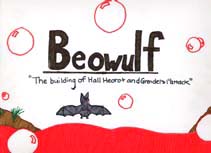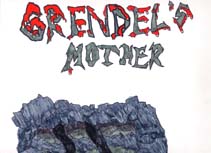 |
|
 |
|
|
||
|
Kamishibai are a Japanese folk art popular in the 1920's and 1930s. Itinerant candy sellers would ride their bicycles from village to village with the storyboard frames attached to the back. The wooden frame contained the kamishibai cards which had a story, illustrations, and a script on the back. The vendor would sell his candy, making sure that the children who actually bought his wares got front row seating, and then he'd perform his story, complete with voices and sound effects. He would pull card after card from the front of the stack, placing them behind in the frame and reading his script from the back of the last one he had pulled. The advent of radio and television soon put the candy vendors out of business. I first ran across kamishibai story boards on the NCTE listserv where a teacher was singing their praises. I bought a set when I ran across them at the national convention in Milwaukee. One of my middleschoolers favorite books is Beowulf by Robert Nye, and I decided to adapt the idea for a culminating project. Here are the steps we used: Groups and Roles The Roles Working with the sequencer, the artist sketches the full size drawing on the Bristol board cards (I bought 11x17 Bristol board which worked perfectly). All members of the group are responsible for helping to color in the outlines. Many of the groups had students who specialized in certain figures (horses, people) who roam during this process to help out those who were less sure. (It is traditional to have some card with half-scenes on them to indicate action, such as having someone peering in a window on one half the card, and what he sees on the other half. The performer shows only one half of the card at at time.) The script writer works with the performer to write an effective script. There should be dialogue for the performer and special effects noises to liven things up. NOTE: the script for each card is pasted to the card at the BACK of the stack, so the performer can read the back as s/he pulls the cards. S/he also helps color the boards. The performer is responsible for giving the show. S/he reads the cards, orchestrates the sound effects, gives the characters voices, and in general acts out the story. S/he also helps color the boards. |
||